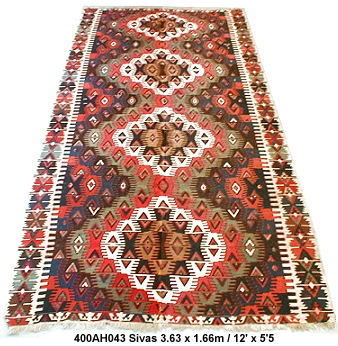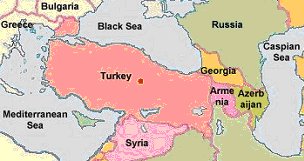

|
kilim-warehouse.com
|
 |
 |
Origin: Sivas/Malatya
Central Anatolia
Woven: c. 1885
Size: 3.63 x 1.66m 12' x 5'4"
Ref: 400AH003
Price Euros 2500
Sivas, on the eastern edge of Central Anatolia, was always an important town on the trade routes to Persia and Iraq. Under the Romans it was known as Sebastea and was the capital of Armenia Minor. Indeed, until the terrible genocide around the beginning of the twentieth century, Sivas had a large Armenian population as well as the Turkish and Kurdish inhabitants who remain today. This area has a very old weaving tradition, from small prayer designs to large kilims woven in two halves on narrow looms. The wool quality in the area was generally fine and silky, together with the expertise of the weavers resulted in many wonderful kilims being made. In this particular case, the main motif, the 'hands on hips' design, or 'Elibelinde' signifies motherhood and fertility and probably derives from the old Anatolian mother goddess figurines. It is repeated throughout the rug with the design reading horizontally rather than vertically. This therefore suggests this kilim was originally made to be placed over a banquette or long sofa as a cover, and was not woven as a floor kilim. As well as the Elibelinde motifs there are also many 'ask ve birlesim' or ying - yang motifs used to indicate the harmony between a man and a woman. This Sivas design therefore indicates the kilim was intended as a dowry piece. The lighter colours are in fact much more typical of those used by Kurdish weavers from Malatya some 175 km to the South East. The wool then is probably from Malatya, the weavers from Sivas - we can only guess at why this could be so. Whatever the reason, maintaining a horizontal pattern on a vertically woven rug, and in two sections on a narrow loom, shows an extremely high level of expertise. A unique and fine kilim.